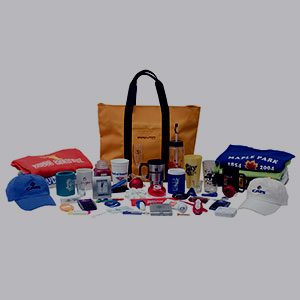Product Hub July 30, 2015
Grow Your Shop the Smart Way
Our comprehensive guide gives you step-by-step instructions on how to expand your business.
As a small-business owner, you should always have an eye on the future, planning out the right steps to keep your shop on a growth path.
Some initiatives, like relocating to a larger building or buying high-tech equipment, come with hefty price tags, but the potential for great rewards. Others, like adding promotional products or streamlining your workflow, require minimal capital investment, while still packing a powerful punch. We’ll walk you through four powerful ways to grow your business.
Space Race
Are your employees constantly bumping into each other? Do they have to climb over boxes of inventory on the way to the press? It might be time to make a move to a bigger location. Relocating is an expensive and time-consuming process, but it may be necessary to take your shop to the next level. “When you realize you can’t keep up with production and you just physically need more equipment to complete the task … that’s when you make the move,” says Terry Combs, an Arizona-based consultant with more than 30 years in the decoration business. “There are only so many ways you can move things around before there’s no more space.”

1. Exhaust other possibilities first. Making a move before you can afford it could have devastating consequences for your business, if it doesn’t come with the steady revenue growth you’d been expecting. Look into increasing overtime, adding a second shift or farming out excess jobs to trusted contractors before moving.
2. Find a location that meets your needs. In many ways, relocating your business is a chance to start over. Think carefully about how much space and electrical capacity you’ll need, not just in the next five months, but also the next five years. Decide whether you want to build something new or if there’s an existing facility that will meet your needs. Pete Bolsoni, owner of Same Day Tees (asi/466828) in Peotone, IL, last year moved from a 2,000-square-foot space to a repurposed downtown car dealership built in the 1940s. The 8,000-square-foot building had some existing office space and additions that constrained the floor plan somewhat, but there was plenty of freedom to create an efficient workflow, he says. “Ideally, I might have laid out the offices differently,” Bolsoni says, adding, “I didn’t want to gut the building and start moving walls.”
$19.19 Billion
Amount the U.S. Small Business Administration loaned out to help small businesses expand in 2014.
Source: SBA, www.sba.gov
3. Secure financing. Make sure you have the necessary capital or access to financing to fund the big move and equipment purchases likely associated with it. Look into whether there are any special economic development grants or loan programs available to help cushion the impact. The U.S. Small Business Administration, for example, sets aside billions of dollars each year to help small businesses expand through real estate and other capital investments. Though applying for such programs can be a lengthy process, the terms often make the hassle worthwhile.
4. Move in. Plan out how long the move will take. Will you move everything at once, or take a more gradual approach? How long do you expect to be down on production? Work with your suppliers and other business contacts during this transitional period to minimize snags.
End Result: Combs has a rule of thumb for relocations: Estimate how many days of production you expect to lose, and then double that number. “You’re definitely going to lose production time,” he adds. “It’s a major undertaking, like moving your home, but times 10.”
From Shirts to Swag
If you’re a decorator who focuses just on T-shirts and other apparel, it may be time to add a new trick up your sleeve. Oftentimes, decorators are on the front lines of a business launch, helping the owner outfit new hires in branded gear. It’s the perfect strategic position to be recommending other logoed products, says Gregg Emmer, vice president and chief marketing officer of promotional products distributor Kaeser & Blair (asi/238600).
68%
Percentage of promotional product sales coming from hard goods, rather than logoed apparel.
Source: 2014 Counselor State of the Industry report, www.asicentral.com/research/state-of-the-industry
Still skeptical? Look at it this way: If you don’t snatch up those promotional dollars, someone else will. “We were tired of sending the artwork that we’d just created for T-shirts to another company to print on a Frisbee,” says Ryan Amato, president of Flemington, NJ-based Ambro Manufacturing (asi/35201). “We were leaving money on the table for another vendor to pick up.” Ambro added promotional products to its offerings two decades ago; today, hard goods account for about 10% of the decorator’s revenues, Amato says.
Another thing to consider is the seasonal nature of decorated-apparel sales, Emmer says. Most T-shirt and cap sellers are busiest in spring and summer, with business slowing down in the colder seasons. But, “At the time when apparel slows down, the hard goods business is increasing,” Emmer adds. Selling promotional products gives decorators “an opportunity to smooth out their cash flow for the year,” he says.

1. Find vendors. You don’t have to purchase expensive new equipment to get started selling promotional products. All you need to do is seek out vendors with the right products and a corporate philosophy that complements your own. There are more than 700,000 imprintable products through ASI’s ESPWeb, for example. “With email and file uploads, it’s a very simple add-on,” Amato says of promotional products.
2. Partner with a large distributor. If you’re daunted by the thought of doing your own legwork, consider teaming up with an established distributor, like Kaeser & Blair. “In many cases, we can set a decorator up within a day or two to get started processing business with online and print catalog tools,” Emmer says. “We do all the work and print the goods. With us, all they have to do is write the order.”
3. Ask the right questions. Don’t expect clients to know you’ve added hard goods to the mix. Find out their needs and suggest the right items to brand their business. When a restaurateur comes in to order uniforms for his latest venture, ask whether there are other promotional items they’re considering for the launch. If they’re intrigued by the inquiry, it’s an easy upsell, Amato says.
4. Be creative. Don’t limit yourself to the staples, like pens or mugs. Think about the demographics of the company you’re working with, and suggest promotions that fit its particular niche. Consider branded hand sanitizers or lip balms for the health-care industry, says Cheryl Endres, vice president of Silkworm Inc., a Murphysboro, IL, decorator that has been offering promotional products for a quarter of a century.
End Result: The benefits of adding promotional products outweigh the risks, proponents say. “It’s a way to increase your volume and business and profits without really increasing your overhead,” according to Endres. Silkworm counts about 30% to 35% of its profits from promotional product sales, a figure that has grown about 5% from 2013.
Help Wanted
Implementing a second shift of workers or even just adding a new position here or there to fill in the gaps is a big step, though certainly not as huge as relocating. “It’s hard to convince yourself to do it,” Combs says.
However, if you have five machines and only enough staff to keep four of them running consistently, it may be time to head over to Craigslist.

1. Crunch the numbers. Look at your production schedule closely and calculate how many new employees you need and can afford. Rather than take out a loan to purchase more equipment, it might make more sense to add a second shift to generate more output from your existing presses. Combs recommends putting together a full second shift, complete with shift supervisors, rather than trying to add people to the new shift gradually. “It’s not until you have somebody working four to midnight that you realize how many questions the production crew has for the art and sales department,” he says. “You need to be efficient during the day, but you have to be doubly efficient at night.”
2. Create job descriptions and an employee handbook. This is an important, but oft-neglected, step. It’s vital for new hires to understand what’s expected of them from day one. Plus, having those expectations clearly stated in written form could protect you from potential legal trouble in the future. Just make sure the positions you create are realistic. For example, Combs has talked with many shop owners looking for a “working supervisor,” who can run a machine and oversee the shop floor at the same time. “That person doesn’t exist,” Combs says. “They’re either doing one job or the other, or half of each.”
3. Look for workers who mesh with your shop. Experience can be helpful, but many industry veterans say a strong work ethic and good attitude are more important attributes to look for in a new hire. Keith Sanders, owner of Classic Creations Screen Printing in Hillsville, VA, says most of his employees came with no printing knowledge, but a strong desire to learn.
4. Make time for training. The reality, Combs says, is that most decorators provide no formal training for hires. New employees may be instructed to stand behind a long-time employee and watch them work, and then perhaps be given a simple job to complete the very next day. This isn’t ideal. “You really need to block out the time to get those people trained properly,” Combs says. “Sit them down and talk about the process and show them all the steps. … You’re probably two weeks in before you really get any productivity out of those folks.”
End Result: It may take a few months before a new employee makes a significant impact on your productivity, Combs says. That’s assuming they’re trained properly and are empowered to become an integral part of the operation. Employees without strong training on the front end could be “limping along” for a whole year before they are up to speed, he adds.
An Eye for Efficiency
Every second matters in the decorating industry. Shaving a little time off each step of production will pay dividends down the line. There’s plenty of high-tech equipment and organizational software out there to help decorators become more efficient, but before you drop thousands of dollars on the latest gadget, take a long, hard look at the way your shop operates. You may be surprised at what you discover. “What you need to do is be your own consultant,” Combs says. “Nearly all shops are pretty efficient about the actual decoration of garments. The trick involved is everything other than the printing.”
$140,000
Estimated annual savings in film and labor costs after switching to a computer-to-screen system, based on a printer who makes 100 screens a day.
Source: Lawson Screen & Digital Products (www.lawsonsp.com)

1. Chart your down time. It costs nothing but time and a sharp pencil, but the results can be a huge eye-opener, Combs says. For a week, mark down every time a machine stops, making a note of whether it was because of art questions, technical issues or something else. Sort the final list by category and determine the most common reason behind a quiet press. Tackle that issue first. “The first time I ever did this, I was surprised,” Combs says. “I was down five or six hours a week because product had been pulled incorrectly.” He implemented double-counting and cross-checking of orders in the warehouse and gained back the lost time. Once you fix the initial problem on the down-time list, you can address the second-biggest time waster, and so forth.
2. Cut back on paperwork. With inexpensive cloud storage and a slew of shop-management software on the market, there’s no reason to bog an operation down with a mountain of paperwork. Try streamlining your work orders to fit onto just one page. “Over time, these work orders get more voluminous,” Combs says. “There’s no press operator on the planet who needs 10 pages to produce a hat job.”
3. Get organized. It’s important to keep track of each job from the time it’s logged in to the time it’s shipped out. Map out a floor plan that minimizes steps between each part of the process, and spend some time developing an organizational system that works for you and your employees. John Bowes, owner of Hatfield, PA-based Cold Cuts (asi/528781), took a cue from the department store he used to work for when storing inventory for his thriving online band merchandise operation.
The shop uses bins with dividers to store preprinted shirts – all neatly folded and bagged – separating each by size. The bins are sorted by SKU number, and Cold Cuts is working on barcoding everything for easy scanning. Overstock is boxed up and kept on shelves, with a list outlining which row contains which shirt style. “Our system for order fulfillment is awesome now,” Bowes says.
4. Invest in new equipment. If you’re in the market for new equipment, consider purchasing something that will help streamline your overall processes, rather than just buying more embroidery machines or screen-printing presses. A laser bridge, for example, can span a multi-head embroidery machine, allowing for production-friendly mixed-media designs that combine embroidery, appliqué and laser etching. For shops that offer screen printing, consider a computer-to-screen (CTS) imaging system, which can generate images directly onto screens, eliminating film costs and dramatically reducing labor.
Mike Frankow, owner of Evolutionary Screen Printing in Lakeland, FL, says his CTS system has helped him save up to 75% of typical setup time. “It cuts out so much of the headache and backbreaking, time-consuming stuff that it just made quality of life better,” he says. An example of the technology’s effectiveness occurred within the first week it was in his shop. Frankow received a last-minute contract job for a baseball league. The late-night order, with a 24-hour turnaround time, involved four-color designs for several teams, and required the creation of about 100 screens. “Had I been doing that with film, I would never have gotten it all done,” he says.
Thanks to the CTS system, the presses were up and running by lunchtime the next day.
End Result: Results will vary depending on the inefficiencies a shop has developed, but Combs was once able to help a client increase productivity by about 60% after making some common-sense corrections. The biggest bottleneck Combs discovered? The vice president of operations wanted to look at each job before it went into production. Rather than giving him a copy of the work order, employees passed him the originals, which would stack up on his desk, untouched, delaying orders by as much as three days.
THERESA HEGEL is a senior staff writer for Stitches.
Contact her at thegel@asicentral.com and follow her on Twitter at @TheresaHegel.

Product Hub
Find the latest in quality products, must-know trends and fresh ideas for upcoming end-buyer campaigns.
